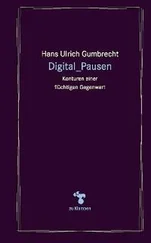“We must attack him from different angles simultaneously. Rendezvous over the village for which I am now heading. We will discuss what is to be done.”
Meanwhile I attack another tank. So far they have not run for cover, doubtless believing that they are sufficiently protected by their fighters. Again one bursts into flame. The Red Falcons are circling over the village and making the craziest hullabaloo; they all want to give advice on the best way to shoot down my Ju. 87. The control officer on the ground rages, threatens, asks whether they have not seen that four tanks are already burning. Now they come back again, from different angles in fact, and I am glad that my fifth tank has used up my last round of ammunition, for if we keep up this game much longer one cannot count on a happy ending. The sweat has been pouring off me all the time though it is very cold outside; excitement is more warming than any fur jacket. The same is true of my escort. Flying Officers Biermann and Kinader are less afraid of being shot down themselves than of failing in their duty to protect me, yet it is more than likely that one or other of the Ivans may say to himself: if I cannot bring down the Stuka with the bars as ordered, I can at least have a go at the Fockes. We set course for home; the Ivans do not stay with us very long before turning back. For quite a while we still hear the reproachful bellowing of the control officer on the ground and the Red Falcons making their excuses.
Often nothing stands in the way of the Russian advance apart from local units thrown together in some critical emergency and frequently composed of airfield and flak personnel and army service corps troops. We lack men and material: the old story, all over again, Individual gallantry and isolated actions may delay but cannot entirely check the advance of colossal numbers of men and material. The few crack units we still have left cannot be everywhere at the same time. Nevertheless our comrades on the ground are putting up an in conceivably gallant fight. The Theiss front is no longer tenable; the next defense line has to be the Danube. I am disturbed by signs of a Soviet thrust in the extreme South through Fünfkirchen in the direction of Kaposvar; if it succeeds, then this new position is again in danger. It is only a very short time before my fears are confirmed.
It is one of our last days at Farmos. A message has just been received that Ivan had infiltrated with a strong armored spearhead in the direction of the Matra Mountains and has reached the outskirts of Göngjes. Our troops, which have been outflanked, are anxious if possible to restore the situation and close the gap. The weather is bad, and we find this particularly trying because this part of the country is very hilly and the cloud cover is even lower than elsewhere. We leave Budapest to port and soon see the Matra Mountains ahead, and shortly afterwards the town of Göngjes. Fires are burning some miles to the south; it is apparent that something is going on there. Sure enough, tanks are traveling along the road, and they are certainly not German. As I make a wide sweep in that direction to obtain a general picture of the enemy’s strength I am met by intense light and medium flak fire. We circle round the advance guard at low level. Right out in front of the T 34s and Stalins is a type of tank I have never seen before; nor have I yet come across it as an American model. I deal with this stranger first, and then turn my attention to the others. When five tanks are in flames I have used up all my ammunition. The anti-tank flight has also done an excellent job and it has been a bad morning for Ivan. We reform and head for home, being engaged for part of the way by Soviet Yak 9 fighters which have appeared on the scene but do us no harm.
We are within ten minutes of our base and well be hind our own lines when it suddenly strikes me: how am I to describe the first tank I shot up when making out my report? Will my automatic camera have taken a good enough photograph for me to be able to say for certain what type of tank it was? It is very important that the general staff should be informed whether and what new types are appearing on any sector of the front; such information is an indication that new weapons are being put into production, or delivered from other countries. I must know what model that first tank was. So I tell the 3rd Squadron leader to take the formation home while I turn round and fly back to the tanks.

Stalin tank
I throttle back a little and circle four or five times at 12-15 feet in a narrow radius round the mysterious steel monster and give it a leisurely examination from the closest proximity. To one side of it stands a Stalin, which has apparently just driven up from the rear of the party to see what has happened here. The strange tank is still burning. As I circle round it for the last time I see some Ivans crouching under the projecting chain guard of the Stalin behind a 13 mm. A.A. machine gun mounted on a tripod. Squeezed close against the tank with their heads down they look up at me and, seeing smoke come out of the muzzle of their machine gun, I perceive that they are busy firing at me. I am within about fifty, at the very most sixty yards range, but the variations caused by the wide arc I am describing are too great for them to make sure of hitting me, unless they are experienced gunners and have learnt just the right thing to do. I am still speculating in this fashion when two hammer blows strike my aircraft and I feel a searing pain in my left thigh. I struggle hard to overcome the blackness in front of my eyes and become aware that a wet, warm flow of blood is running down my leg. Gadermann sits behind me; I tell him, but he cannot do anything for me because it is impossible for him to get forward. I have no bandages with me. The country we are flying over is only thinly inhabited, the terrain not specially suitable for a forced landing. If we come down here goodness knows how long it will take to get proper medical aid, and I shall bleed to death. So I must try to reach Budapest twenty-five minutes away.
I can see that my strength is failing fast. The blood is still flowing freely… I have a queer feeling in my head… a sort of trance… but I keep on flying and feel that I still have control of my senses. I switch on the intercom, and ask Gadermann:
“Do you think I will pass out suddenly… or will my strength go on ebbing gradually?”
“You’ll never reach Budapest… in all probability… but you won’t faint suddenly.”
The last words are a quick addition, presumably so as not to upset me.
“Then I’ll go on flying… and chance it.”
The throttle is forward as far as it will go… minutes of anxious tension…. I won’t give in… I won’t… there is the fighter airfield, Budapest… flaps down… throttle back… I am down… it’s all over!…
I come to on an operating table in a private hospital. The nurses gathered round me are watching me with a peculiar look on their faces. Behind the surgeon, Professor Fick, stands Gadermann; he is wagging his head. He tells me afterwards that while I was under the anesthetic I had just said some very curious things which did not seem to have exactly delighted the nurses. What can one do in a situation like that? Professor Fick explains that he has extracted a 13 mm. machine gun bullet which had entered my leg at an angle, another having passed clean through the flesh. He tells me I have lost a great deal of blood and that as soon as he has set my leg in plaster of Paris I must go into a nursing home on Lake Balaton to recuperate as quickly as possible under the best medical care and to give my wounds a chance to heal in peace and quiet.
Читать дальше













